Safety Planning for Problem Behaviors in ABA Programs

Understanding the Foundation of ABA Therapy and Safety Planning
Applied Behavior Analysis (ABA) therapy is widely recognized as an effective approach for modifying behaviors in individuals with autism. Given the complexities involved with problem behaviors, particularly challenging or self-injurious behaviors, safety planning in ABA programs is essential. This article explores the critical strategies and considerations in safety planning within ABA frameworks, from understanding ABA basics to developing individualized intervention plans that prioritize safety, efficacy, and respect for the individual's needs.
What is Applied Behavior Analysis (ABA) Therapy in Autism Treatment?
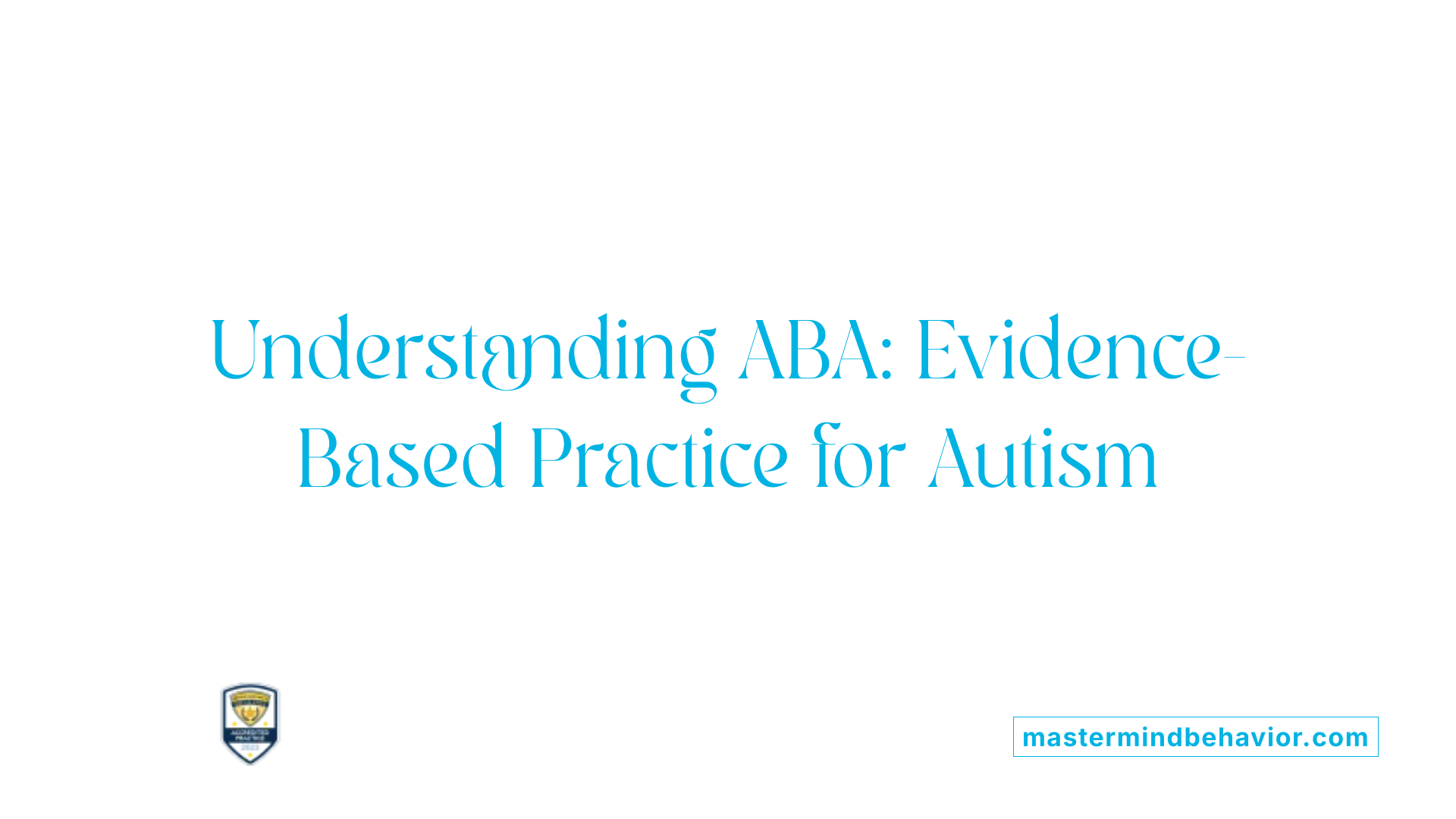
What is Applied Behavior Analysis (ABA) therapy in the context of autism treatment?
Applied Behavior Analysis (ABA) therapy is a scientific, evidence-based approach aimed at understanding and changing behaviors, particularly in individuals with autism. It centers on using positive reinforcement and carefully designed interventions to increase beneficial behaviors like communication, social interaction, and daily living skills, while reducing negative or harmful behaviors.
How does ABA use the behavior analysis model?
ABA employs the Antecedent-Behavior-Consequence (A-B-C) model to analyze behaviors. This means therapists study what happens before a behavior (antecedents), the behavior itself, and what follows it (consequences). Adjusting antecedents and consequences helps teach new skills and shape behavior effectively.
What are the goals of ABA therapy?
The primary goals include teaching useful social, academic, and communication skills and reducing disruptive behaviors. ABA programs help children learn and maintain new skills, generalize them across settings, and decrease challenging behaviors that interfere with learning or safety.
How are ABA programs individualized and implemented?
Treatments are tailored to each child's unique needs by Board Certified Behavior Analysts (BCBAs). These specialists design plans based on assessments and continuous data collection, ensuring interventions are responsive and progress is tracked for ongoing adjustments.
Why is data-driven decision making important in ABA?
Decisions in ABA therapy rely on measuring the child’s responses to interventions. Consistent data collection enables behavior analysts to determine what strategies work best, optimize outcomes, and ensure treatment goals are met effectively.
ABA therapy is widely recognized as a compassionate and scientifically supported method, helping children with autism acquire vital skills and manage behaviors through personalized, measurable, and positive approaches.
Benefits of ABA Therapy for Individuals with Autism

How does ABA therapy benefit individuals with autism?
ABA therapy systematically enhances social, communication, and cognitive skills in individuals with autism through scientifically backed methods. By applying positive reinforcement and structured interventions, it effectively increases desired behaviors like verbal communication and daily living skills while reducing challenging or disruptive behaviors that interfere with learning and social interaction.
Systematic improvement of social, communication, and adaptive skills
ABA therapy uses consistent techniques to teach essential skills. These include language development, social interaction, and adaptive behaviors necessary for independent living. Tailored strategies such as Discrete Trial Training (DTT) break down skills into manageable steps, promoting mastery and confidence.
Reduction of challenging and interfering behaviors
Challenging behaviors often serve communicative or sensory functions. ABA addresses these by identifying triggers through Functional Behavior Assessments (FBA) and teaching replacement behaviors. Techniques like differential reinforcement help encourage positive actions while minimizing problematic ones.
Early intensive intervention advantages
Starting ABA therapy early, especially before age 4, leads to more impressive long-term outcomes. Early intervention capitalizes on the brain’s plasticity, facilitating better social integration, communication proficiency, and functional independence as the child grows.
Personalized approaches like DTT, PRT, and ESDM
ABA incorporates various individualized methods to suit each child’s strengths and challenges. Alongside Discrete Trial Training (DTT), strategies such as Pivotal Response Treatment (PRT) and the Early Start Denver Model (ESDM) offer naturalistic and play-based learning, enhancing motivation and generalization of skills across settings.
Enhancement of quality of life and functional independence
Through focusing on socially important behaviors, ABA therapy improves overall quality of life. Children gain skills that increase their ability to engage in everyday activities, maintain safe interactions, and participate meaningfully in family and community life. This fosters greater independence, confidence, and social inclusion.
| Benefit Area | Description | Key Techniques Involved |
|---|---|---|
| Skill Development | Enhances communication, social, and daily living skills | DTT, PRT, ESDM |
| Behavior Reduction | Decreases disruptive and harmful behaviors | FBA, replacement behaviors, differential reinforcement |
| Early Intervention | Achieves more significant developmental gains when started young | Intensive, individualized early programs |
| Personalized Treatments | Tailors approaches to individual needs and learning styles | Customized plans by BCBAs |
| Quality of Life | Promotes independence, safety, and social participation | Skill generalization, family involvement |
Key Providers and Their Qualifications in ABA Therapy
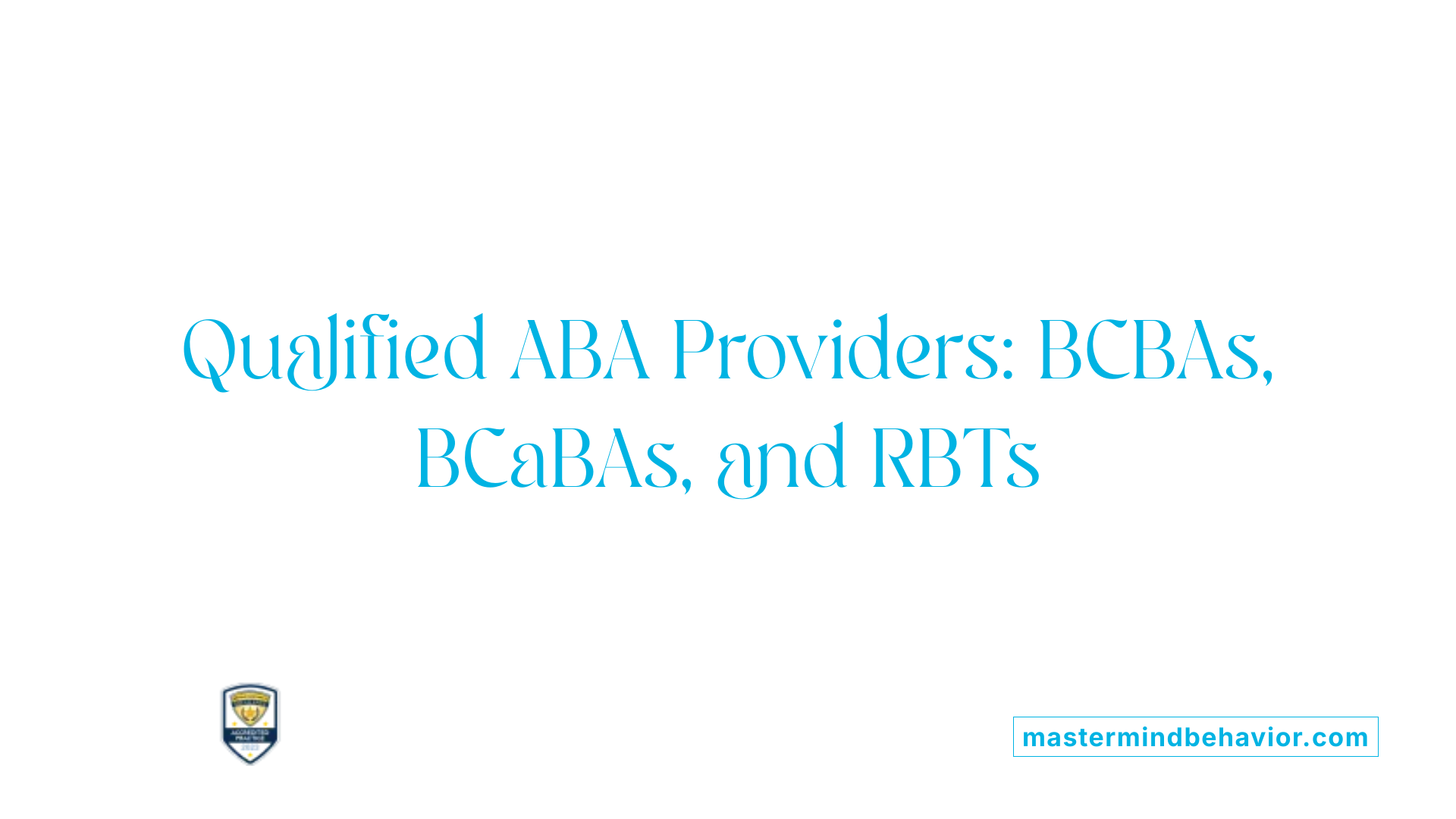
Roles of Board Certified Behavior Analysts (BCBAs)
Board Certified Behavior Analysts (BCBAs) are the primary professionals who provide ABA therapy. They are experts licensed and certified by the Behavior Analysis Certification Board (BACB), typically holding graduate degrees in psychology, behavior analysis, or related fields. BCBAs are responsible for conducting detailed assessments such as Functional Behavior Assessments (FBA), designing individualized intervention plans, overseeing therapy implementation, and training caregivers and other team members. Their expertise allows them to tailor treatment to each child's unique needs.
Registered Behavior Technicians (RBTs) and Assistant Behavior Analysts (BCaBAs)
Registered Behavior Technicians (RBTs) are paraprofessionals who deliver direct therapy sessions under the close supervision of BCBAs. They play a vital role in implementing intervention strategies, collecting data on behavior, and ensuring consistency in therapy. RBTs complete specialized training and credentialing to fulfill these responsibilities effectively.
Assistant Behavior Analysts (BCaBAs) hold certification just below that of BCBAs and support them by supervising RBTs, analyzing data, and adapting treatment plans as needed. BCaBAs also have BACB certification and foundational training in applied behavior analysis, enabling them to bridge between clinical design and day-to-day implementation.
Educational Background and Certification Requirements
Providers engaged in ABA therapy must complete rigorous education and certification. BCBAs require graduate-level education and BACB certification, which involves passing an extensive exam and ongoing professional development. RBTs must complete a credentialing process that includes training hours and competency assessments. BCaBAs are similarly certified by the BACB, holding at least a bachelor's degree with behavior analysis coursework.
Responsibilities in Assessment, Intervention Planning, Implementation, and Supervision
These professionals work collaboratively: BCBAs lead assessments and create intervention plans using data-driven methods, BCaBAs assist with supervision and modifications, and RBTs carry out daily therapy sessions. This team approach ensures evidence-based interventions are implemented effectively and adjusted based on ongoing progress.
Importance of Professional Training in Autism and Behavioral Science
Given that ABA therapy addresses complex behaviors often related to autism spectrum disorder, professionals involved are trained not only in behavioral principles but also in the nuances of autism. This specialized knowledge ensures sensitivity and effectiveness in managing behaviors, fostering communication, and supporting skill development in children with autism.
| Provider Role | Certification & Education | Primary Responsibilities |
|---|---|---|
| BCBA | Graduate degree + BACB certification | Assessment, plan design, supervision, caregiver training |
| BCaBA | Bachelor's degree + BACB certification | Assisting BCBAs, supervising RBTs, data analysis |
| RBT | Specialized training and certification | Direct implementation, data collection under supervision |
Common Methods and Techniques Used in ABA Therapy
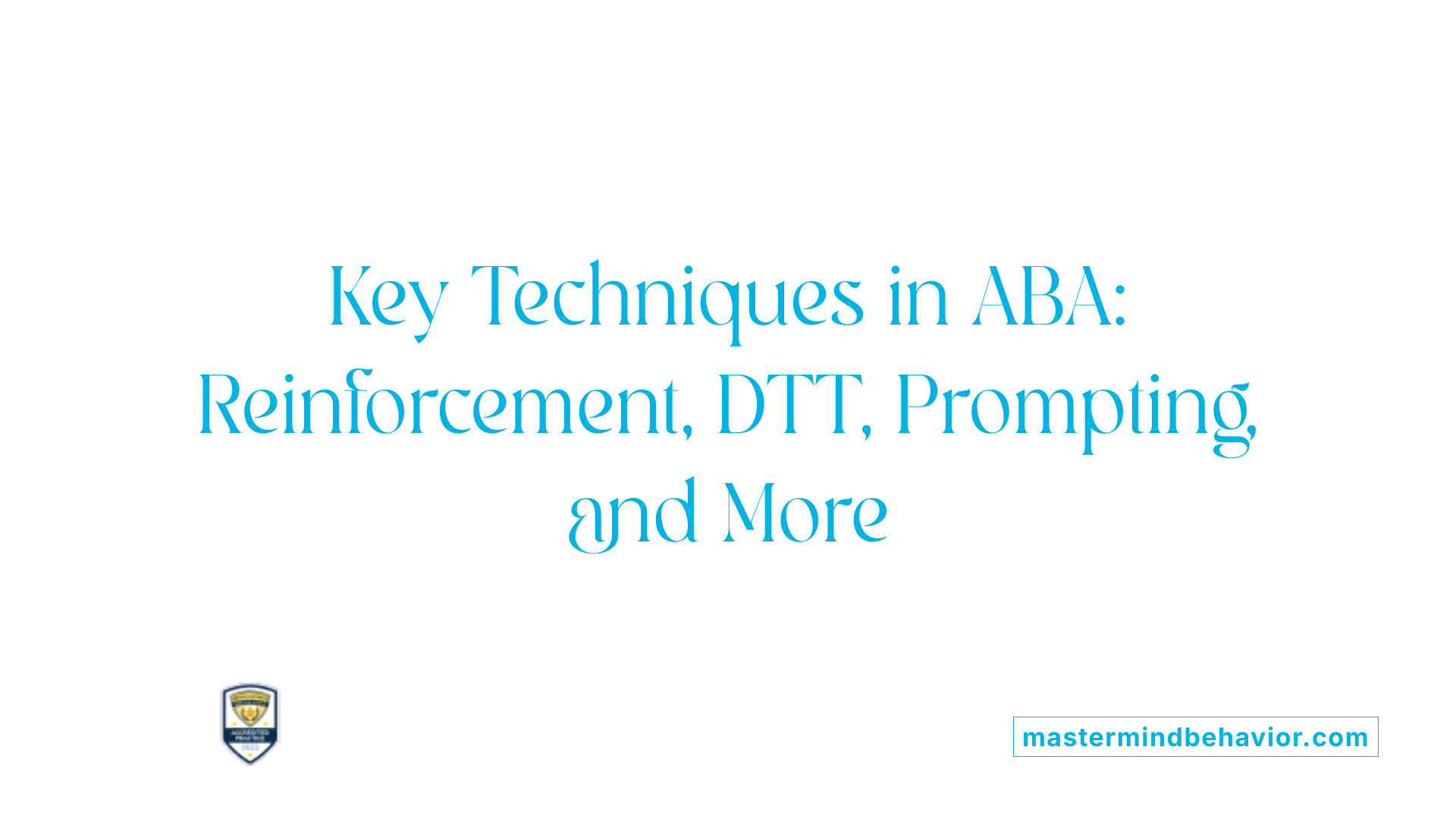
What methods and techniques are commonly used in ABA therapy?
ABA therapy utilizes a range of evidence-based strategies designed to promote lasting and meaningful behavior change. At the core is positive reinforcement, which encourages desirable behaviors by providing praise or rewards, helping individuals understand what is expected and motivating them to repeat those behaviors.
One widely used method is Discrete Trial Training (DTT). DTT involves breaking down complex skills into small, manageable steps and guiding the learner through repeated, structured trials that include clear instruction, a response, and a consequence. This systematic approach supports skill acquisition especially in children with autism.
Task analysis complements DTT by decomposing complex behaviors into sequential steps, making it easier for learners to master multi-step activities, such as dressing or brushing teeth.
To support learning independence, ABA employs prompting (providing cues or assistance), fading (gradually reducing prompts), and chaining (linking individual steps into a complete behavior). These techniques are critical for building confidence and skill fluency.
Visual supports play a significant role in ABA; tools like token boards provide tangible symbols of progress and motivation by rewarding tasks like sitting appropriately or trying new foods. Additionally, social stories are used to prepare individuals for upcoming events or challenging situations, enhancing understanding and reducing anxiety.
When addressing problematic behaviors, methods such as extinction (withholding reinforcement for undesired behaviors), functional communication training (FCT) (teaching alternative communication skills), and differential reinforcement (rewarding positive behaviors while ignoring or redirecting negative ones) are commonly applied.
ABA is a highly individualized approach; therapists tailor these methods based on strengths, challenges, and developmental levels. This blend of techniques creates an effective, compassionate foundation for promoting positive behaviors and skill mastery.
Understanding and Addressing Problem Behaviors in ABA Safety Planning

What is the Role of Functional Behavior Assessments (FBA) in Identifying Behavior Functions?
Functional Behavior Assessments (FBAs) are critical in Applied Behavior Analysis (ABA) safety planning. They involve observing and gathering data to understand why a child exhibits challenging behaviors. An FBA helps identify the specific triggers and the purpose those behaviors serve for the child, such as gaining attention or avoiding a task. Knowing the function allows for a targeted and effective intervention.
What Are Common Functions of Problem Behaviors?
Problem behaviors often serve distinct purposes in communicating a child's needs or feelings. Typical functions include:
- Escape or avoidance: Stepping away from unpleasant tasks or demands.
- Seeking attention: Drawing focus from adults or peers.
- Sensory stimulation: Responding to or regulating sensory inputs, sometimes causing self-injury or aggression.
How Can Antecedents and Environmental Triggers Be Identified and Modified?
Antecedents are events or conditions occurring before a behavior. Identifying environmental triggers—like loud noises, bright lights, or unfamiliar settings—helps prevent behaviors by addressing root causes. Modifications may involve:
- Creating predictable routines to reduce anxiety.
- Using noise-canceling headphones for sensory sensitivities.
- Adjusting tasks to be less overwhelming.
How Does ABA Teach Replacement and Safer Alternative Behaviors?
Instead of simply stopping problematic behaviors, ABA encourages teaching children safer and more appropriate ways to meet the same needs. For example, a child taught to request a break verbally or through a communication device rather than engaging in self-injury. This empowers communication and reduces frustration.
What Is the Role of Differential Reinforcement?
Differential Reinforcement involves giving positive reinforcement for desired behaviors while withholding reinforcement for unwanted actions. It includes strategies like:
- DRA (Differential Reinforcement of Alternative behavior): Rewarding a good replacement behavior.
- DRO (Differential Reinforcement of Other behavior): Rewarding absence of the problem behavior.
- DRI (Differential Reinforcement of Incompatible behavior): Reinforcing behaviors incompatible with the problem behavior.
Why Is Avoiding Punishment Important in ABA Safety Planning?
ABA emphasizes positive approaches over punishment to respect the child and maintain safety. Punishment can increase anxiety or lead to more difficult behaviors. Instead, reinforcing positive behaviors and modifying environmental factors create a supportive and effective framework for behavior change.
This approach ensures that behavior interventions prioritize the child's dignity and long-term success while enhancing safety through well-planned strategies.
Creating Predictable Routines and Environmental Supports to Reduce Challenging Behaviors
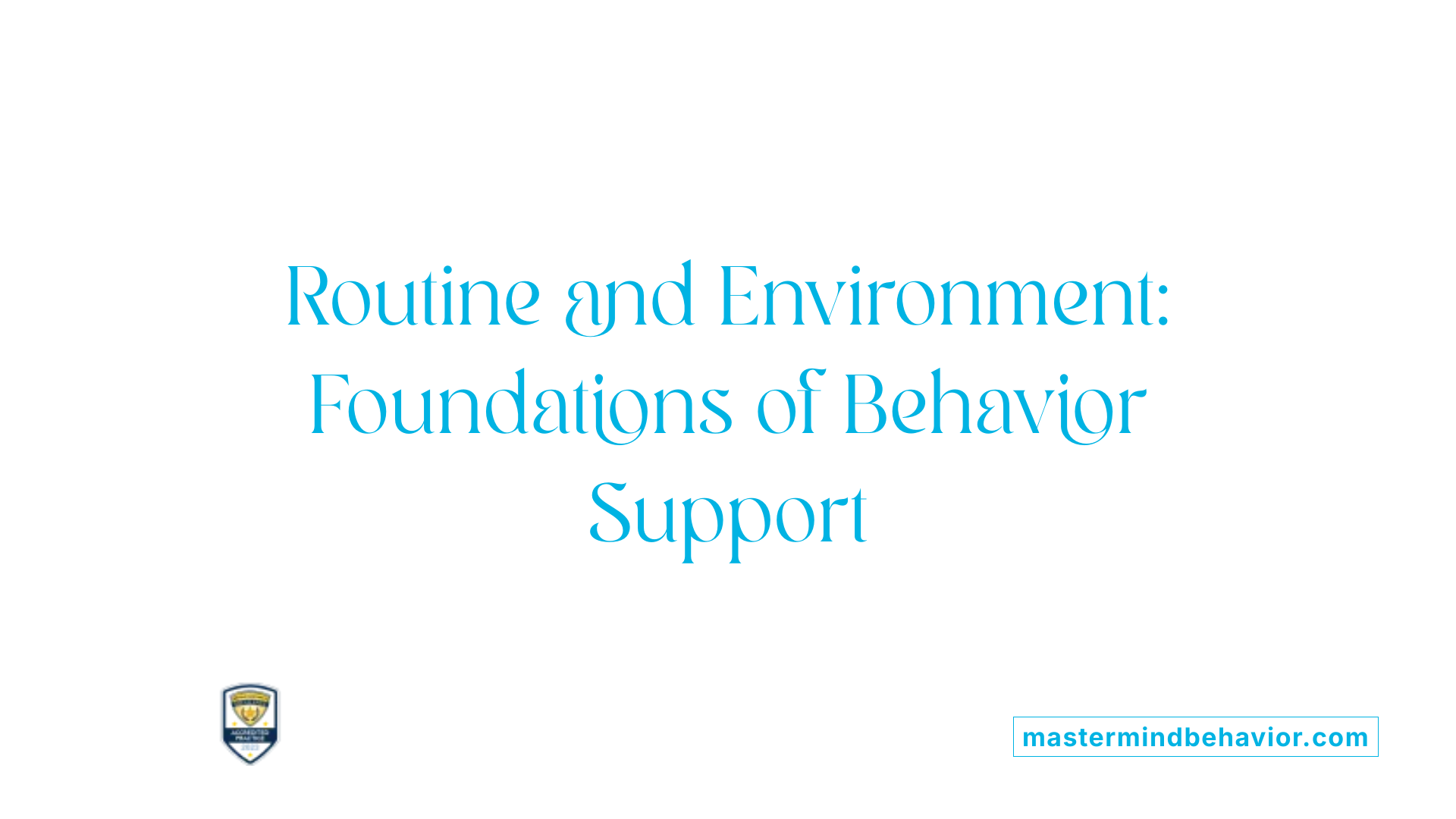
Establishing Clear Routines and Expectations with Visual Schedules
Creating predictable routines is an effective method to help children with autism understand what is expected of them. Visual schedules and timers serve as powerful tools to establish these routines, providing clear and consistent cues that decrease confusion and anxiety. By knowing what comes next, children feel safer and are more likely to engage cooperatively throughout the day.
Use of Sensory Tools Like Noise-Canceling Headphones
Many children with autism experience sensory sensitivities that can trigger challenging behaviors. Providing sensory tools such as noise-canceling headphones helps manage their environment by reducing overwhelming auditory input. This simple accommodation can prevent sensory overload and promote a calmer, more focused state.
Modifying Surroundings to Reduce Sensory Overload
Environmental modifications play a crucial role in behavior management. Adjusting lighting to softer levels, minimizing background noise, and selecting comfortable, non-irritating clothing reduce sensory triggers. Altering these antecedents helps children stay calm, enabling them to better participate in activities and reducing the occurrence of disruptive behaviors.
Benefits of Predictability in Reducing Anxiety and Disruptions
Predictability through routines and environmental controls reduces uncertainty, which is a major source of anxiety for many children with autism. When children feel safe and know what to expect, their stress levels decrease, leading to fewer behavior disruptions. This groundwork supports learning and social engagement by fostering a secure and supportive setting.
Incorporating Social Stories and Role-Play to Prepare for Challenging Situations
Using social stories and role-play prepares children for upcoming changes or difficult scenarios. These strategies teach appropriate responses and coping skills in a controlled, reassuring manner. Rehearsing through role-play builds confidence and reduces fear of new experiences, contributing to better behavioral outcomes.
Helping Children Feel Safe and Supported to Promote Calm Behavior
Overall, creating a nurturing environment where children feel safe and supported is critical. Positive reinforcement, combined with consistent routines and sensory accommodations, promotes calmness and cooperation. This supportive atmosphere encourages children to express themselves constructively and reduces the need for challenging behaviors as a form of communication.
Collaborative Development of Individualized Behavior Intervention Plans (BIPs)

How do BCBAs and multidisciplinary teams contribute to behavior intervention plans?
Board Certified Behavior Analysts (BCBAs) play a crucial role in designing individualized Behavior Intervention Plans (BIPs) by conducting Functional Behavior Assessments (FBAs) and identifying the root causes and functions of challenging behaviors. They often collaborate with multidisciplinary professionals such as speech therapists and occupational therapists to address the child's diverse needs. This team approach ensures interventions are comprehensive and tailored, incorporating communication and sensory considerations that support skill development and behavior change.
What is the role of family collaboration and training?
Family involvement is essential to the success of BIPs. Families participate actively in treatment planning and receive training to implement strategies consistently across settings. Ongoing family support helps increase motivation and generalization of new skills, promotes consistency in responses, and encourages a supportive home environment. This partnership also empowers families to identify triggers and reinforce positive behaviors effectively.
How are SMART goals integrated into BIPs?
BCBAs design SMART (Specific, Measurable, Achievable, Relevant, Time-bound) goals based on each child's unique strengths and challenges. These clear, realistic objectives facilitate tracking progress and maintaining motivation for both the child and caregivers. For example, a goal might focus on increasing communication skills by requesting breaks using a visual card within six weeks, ensuring it is both measurable and practical.
What methods ensure continuous monitoring and progress review?
Data collection is integral for monitoring a child's response to interventions. Regular progress reviews allow teams to analyze behavior trends, assess the effectiveness of strategies, and make informed adjustments. This continuous feedback loop ensures the BIP remains responsive and effective, promoting safety and minimizing risks from challenging behaviors.
How are interventions adjusted for safety and effectiveness?
Interventions are dynamically modified based on ongoing assessments. If data indicate that a strategy is not reducing risk behaviors or improving skills, the BCBA and team collaborate to refine techniques, modify environments, or enhance supports. Safety plans are established to prepare for and manage challenging situations, using tools like social stories and role-play to build coping skills.
How does ABA integrate with sensory integration and other therapies?
For many children, combining ABA with sensory integration therapy, occupational therapy, and speech therapy creates a holistic approach that targets underlying sensory, communication, and motor issues. This integrated method addresses complex behavior patterns more effectively while promoting adaptive skills. Families and professionals work together to synchronize goals and strategies, ensuring well-rounded care.
| Aspect | Description | Benefit |
|---|---|---|
| Multidisciplinary Team | BCBAs collaborate with speech and occupational therapists | Comprehensive, tailored care for diverse needs |
| Family Collaboration & Training | Families actively trained and involved | Consistency, empowerment, and generalization |
| SMART Goal Setting | Specific measurable objectives based on strengths and challenges | Clear focus and motivation |
| Monitoring & Progress Review | Data-driven continual assessment | Responsive and effective intervention |
| Intervention Adjustment | Dynamic modification of strategies for safety and effectiveness | Safer and more successful behavior management |
| Therapy Integration | Combining ABA with sensory and other therapies | Holistic support addressing root causes |
Managing Self-Injurious and Aggressive Behaviors Through ABA

How does Functional Behavior Assessment (FBA) help identify causes of self-injurious and aggressive behaviors?
Functional Behavior Assessment (FBA) is a foundational tool in ABA therapy used to understand the root causes of challenging behaviors such as self-injury and aggression. By carefully observing and collecting data through interviews and direct observation, an FBA uncovers triggers and functions of behaviors. Common underlying causes include frustration, communication difficulties, sensory overload, or desires to escape or gain attention.
What ABA strategies are used to safely reduce self-injurious and aggressive behaviors?
ABA interventions focus on modifying antecedents and consequences to reduce harmful behaviors. Strategies include altering the environment to prevent triggers, breaking tasks into manageable steps, and providing choices to empower the child. Differential reinforcement techniques selectively reward desirable behaviors while discouraging problematic ones. Extinction procedures may be applied to reduce reinforcement of unwanted behaviors safely.
How is functional communication and replacement behavior taught?
ABA teaches children alternative, functional communication methods and replacement behaviors to meet their needs safely. For example, instead of hitting or self-harming when upset, a child might learn to request a break or use a communication device. This approach reduces reliance on harmful behaviors by offering constructive ways to express needs or avoid discomfort.
What role does reinforcement play in encouraging positive behavior?
Reinforcement, especially positive reinforcement through praise, rewards, or token boards, encourages the repetition of adaptive behaviors. Reinforcing calm and safe behaviors strengthens their occurrence, helping children understand which behaviors are appropriate. Tailored reinforcement systems help maintain motivation and support behavioral change.
How are behavior shaping and extinction procedures incorporated?
Behavior shaping involves gradually teaching new skills by reinforcing successive approximations toward the desired behavior. Extinction procedures reduce behaviors by withholding reinforcement previously maintaining them, leading to their decrease over time. Both techniques are carefully implemented under professional guidance to promote safe and effective behavior change.
Why is professional supervision and safety planning essential during episodes?
Because self-injurious and aggressive behaviors can pose safety risks, professional oversight by a Board Certified Behavior Analyst (BCBA) is critical. A BCBA designs individualized safety plans that include preparation for challenging situations, role-playing, and environmental modifications. Collaboration with other therapists ensures a comprehensive approach. Family involvement and ongoing monitoring ensure that interventions remain effective and that safety is prioritized.
Family Participation and Ethical Considerations in Safety-Focused ABA Practices
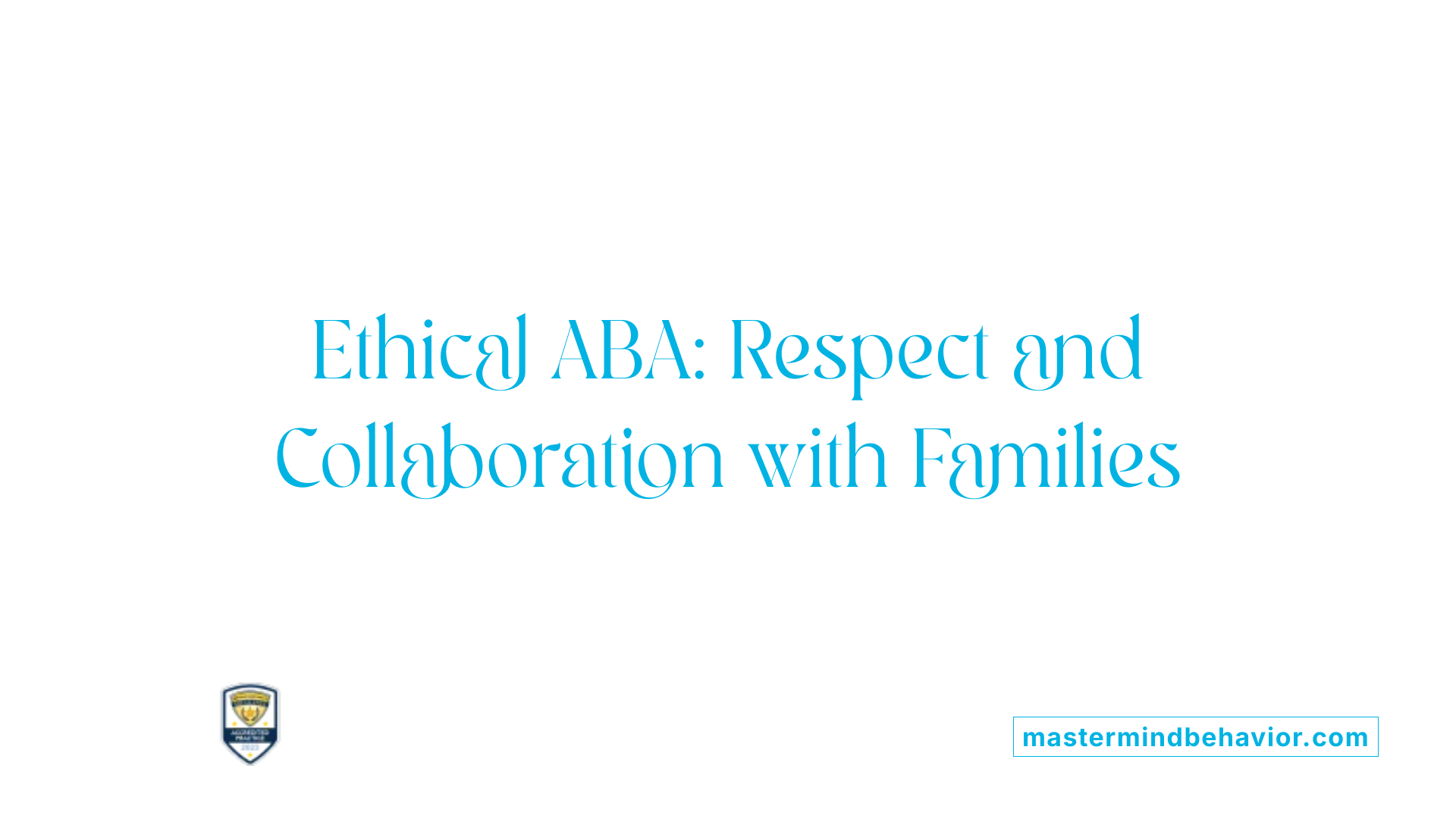
Training Families for Consistency and Effective Intervention
Family participation is crucial in ABA therapy, especially in creating a consistent and supportive environment. Training helps families understand behavioral strategies, reinforcing positive behaviors at home and reducing challenging behaviors. Ongoing involvement ensures interventions are tailored and effective, fostering collaboration between therapists and caregivers.
Ensuring Respectful, Person-Centered Approaches
ABA therapy emphasizes positive reinforcement over punishment to avoid shaming or labeling children as "bad." Techniques focus on understanding behaviors as forms of communication, aiming to respect each child's dignity. Creating a supportive atmosphere helps children feel safe and valued, promoting better behavioral outcomes.
Acknowledging Neurodiversity and Individual Needs
Recognizing that every individual with autism has unique strengths and challenges is essential. Ethical ABA practices honor neurodiversity, avoiding efforts to suppress natural behaviors unnecessarily. Personalized treatment plans designed by Board Certified Behavior Analysts (BCBAs) incorporate the child’s preferences, promoting autonomy and emotional well-being.
Balancing Behavioral Goals with Emotional Well-Being
While ABA seeks to increase helpful behaviors and reduce harmful ones, it is vital to balance these goals with a child’s emotional health. Avoiding overly rigid interventions ensures the therapy supports not only skill development but also the child’s happiness and self-esteem.
Addressing Controversies Regarding Rigidity and Compliance
Some criticisms of ABA stem from past use of punitive methods and a strict focus on compliance. Modern ABA increasingly adopts flexible, compassionate techniques that prioritize the individual’s comfort and consent. Dialogue around these concerns encourages adaptation and improvement of ethical standards.
Ongoing Dialogue Between Professionals, Individuals, and Families for Ethical Care
Maintaining open communication among behavior specialists, families, and individuals is key. This dialogue fosters transparency and ensures treatment aligns with family values and the child’s needs. It also helps to address concerns promptly and refine interventions based on evolving understanding.
In summary, ethical ABA practices combine skillful family training with a compassionate, individualized approach. Respecting neurodiversity, avoiding shame or punishment, and fostering ongoing collaboration are central to safe and effective behavior therapy.
The Versatility of ABA in Addressing Problem Behaviors Across Conditions

Use of ABA Beyond Autism
Applied Behavior Analysis (ABA) therapy, traditionally associated with autism treatment, is increasingly recognized for its broad utility in managing behaviors linked to various conditions. From Attention-Deficit/Hyperactivity Disorder (ADHD) and Obsessive-Compulsive Disorder (OCD) to Post-Traumatic Stress Disorder (PTSD), Oppositional Defiant Disorder (ODD), and Traumatic Brain Injury (TBI), ABA offers adaptable strategies to address diverse behavioral needs.
Tailoring ABA Methods to Different Disorders
ABA methodologies are flexible, allowing professionals to tailor interventions to specific disorders and individual behavioral challenges. For example, children with ADHD benefit from token economies that enhance social skills and manage impulsivity, while those with OCD may combine ABA with mental health therapies to reduce compulsive behaviors.
Behavior Shaping and Reinforcement in Various Conditions
Central to ABA is the use of positive reinforcement and behavior shaping to encourage desirable behaviors. These techniques effectively address behavioral manifestations in developmental and mental health conditions, supporting skill acquisition and behavior modification without reliance on punishment.
Promoting Social Skills and Reducing Challenging Behaviors
ABA strategies facilitate improvements in social interactions and reduce problematic behaviors such as defiance in ODD. By reinforcing positive behavioral responses rather than focusing on punishment, ABA helps individuals learn healthier ways of coping and engaging socially.
Complementary Therapies and Collaborative Approaches
ABA's effectiveness is enhanced when combined with complementary interventions like sensory integration, occupational therapy, and speech therapy. Interdisciplinary collaboration ensures comprehensive treatment plans that address the multifaceted needs of individuals across conditions.
Demonstrated Broad Applicability and Evidence-Based Effectiveness
The scientific foundation of ABA and its evidence-based success across a spectrum of disorders underscore its role as a versatile intervention. Its applicability extends beyond autism, proving valuable for children and adults facing various cognitive, developmental, and behavioral challenges.
| Condition | ABA Application | Description |
|---|---|---|
| Autism Spectrum Disorder | Behavior modification, skill acquisition | Establishing communication, social, and daily living skills |
| ADHD | Impulse control, social skill enhancement | Token economies, reinforcement strategies |
| OCD | Reduction of compulsive behaviors | Combined with mental health therapies |
| Oppositional Defiant Disorder | Defiance reduction, behavior shaping | Praise and reinforcement over punishment |
| PTSD | Calming responses, trauma-related behavior management | Gradual exposure and support |
| Traumatic Brain Injury | Behavior modification, social skill relearning | Customized interventions for cognitive and behavioral changes |
ABA’s adaptability and evidence-based strategies make it a cornerstone in behavioral and developmental interventions across a wide array of psychological conditions.
Implementing Effective and Compassionate Safety Plans in ABA Programs
Safety planning for problem behaviors within ABA programs involves more than just behavior modification—it requires a comprehensive, individualized, and compassionate approach. By understanding the foundations of ABA, utilizing evidence-based techniques, addressing triggers and underlying causes, and collaborating closely with families and multidisciplinary teams, safety plans can both protect and empower children with autism. Ethical considerations and respect for neurodiversity are paramount to ensure interventions foster growth without compromising identity or well-being. With careful planning and professional guidance, ABA programs can successfully reduce problem behaviors and create safe, supportive environments that enhance the quality of life for individuals and their families.
References
- 8 Behavior Management Strategies for Children with Autism
- What is Applied Behavior Analysis?
- Handling Aggression and Self-Injury in Children with Autism
- ABA Therapy for Self-Injury
- Is ABA Therapy Only for Autism?
- Applied Behavior Analysis (ABA)
- Who Qualifies for ABA Therapy: Eligibility Guide
- Understanding Your Child's ABA Therapy Providers
- Applied Behavior Analysis (ABA)
Recent articles

How Culture and Diversity Impact ABA Therapy Outcomes
Bridging Cultures to Enhance Therapy Success in Autism Care

Safety Planning for Problem Behaviors in ABA Programs
Comprehensive Strategies to Ensure Safety and Success in ABA Interventions

Finding Support: Financial Aid And Insurance Advocacy For ABA Therapy
Navigating Financial and Insurance Support for ABA Therapy

The Importance Of Reinforcement Diversity In ABA Programs
Enhancing ABA Therapy Through Varied Reinforcement Approaches

How ABA Therapy Encourages Self-Expression Through Communication
Unlocking Voices: The Role of ABA Therapy in Enhancing Communication for Autism

How ABA Therapy Reduces Inflexible Behavior Patterns
Unlocking Flexibility: The Transformative Impact of ABA Therapy on Autism Behaviors



